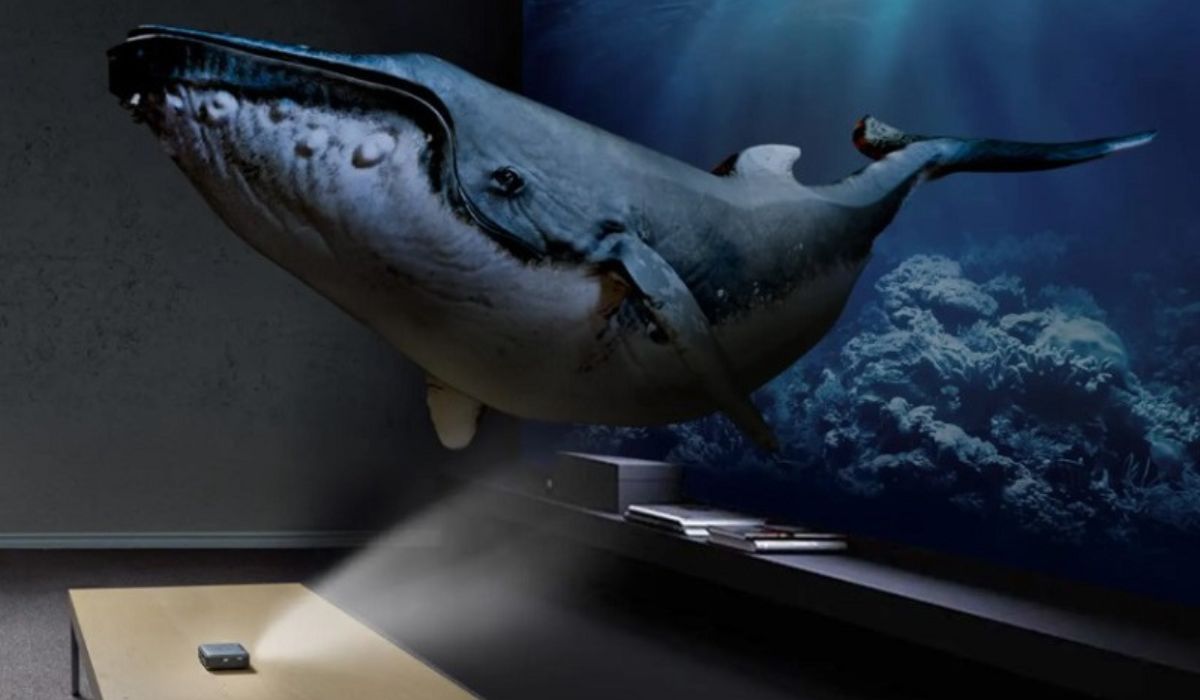Technology is continually developing to provide more exciting and realistic presentations and performances. The 3D projector is a technological marvel that has altered the way we experience visual media. The use of 3D projectors has spread beyond the theatre and into homes, improving the entertainment and education we receive.
What is a 3D Projector
A state-of-the-art 3D projector employs cutting-edge imaging technologies to show photos and movies with an extra depth dimension. The visuals projected by 3D projectors have a sense of depth not seen in 2D projectors, making the on-screen characters and environments appear more real.
How does a 3D Projector work
Creating the illusion of depth is what makes 3D projection so special. In stereoscopy, two slightly different pictures are projected onto the screen at the same time to create this effect. These images combine when viewed via special glasses, giving the impression of depth and dimension.
The Benefits of Using a 3D Projector
Immersive Entertainment
When it comes to watching films, 3D projectors have been a game-changer. A 3D projector puts you in the middle of the action, whether you’re viewing the latest blockbuster or playing an immersive video game. You become emotionally invested in the story because the images come to life.
Enhanced Educational Experience
3D projectors have been quite helpful in the classroom. They make even the study of difficult topics like anatomy, astronomy, and geography fun and interesting. Students can learn more about a topic by navigating 3D models and simulations.
Engaging Business Presentations
Presentations that are both interesting and informative are essential in the business world. Information presented with a 3D projector is more engaging for the audience and is more likely to stick with them after the presentation is over. Visualisations of concepts and data can provide insights that are not possible with other types of presentations.
Types of 3D Projectors
There are several varieties of 3D projectors on the market, each employing a unique technology to produce stunning graphics. The three most common are as follows:
DLP (Digital Light Processing)
DLP projectors create clear and detailed images by reflecting light off of tiny mirrors. They are perfect for use in home theatres and gaming rigs because of their excellent contrast ratios and low motion blur.
LCoS (Liquid Crystal on Silicon)
Images are displayed on liquid crystal displays in LCoS projectors. They are popular in both high-end home theatres and commercial settings due to their accurate reproduction of colour.
LCD (Liquid Crystal Display)
Images are projected using LCD projectors using liquid crystal technology. They are well-liked because of their low cost and multiple uses, including personal and professional presentations.
Factors to Consider When Choosing a 3D Projector
There are a number of aspects to take into account when deciding on the best 3D projector for your needs:
Brightness and Lumens
Lumens are the standard for evaluating a projector’s output brightness. Increased lumens are required to preserve visual clarity in brightly light rooms or on larger screens.
Resolution and Aspect Ratio
Projectors with a higher pixel count can display finer details, which is very important for 3D media. The width to height ratio of a picture is set by the aspect ratio.
Connectivity Options
Think about whether or not your gadgets will work with the projector’s input options, such as HDMI, VGA, or wireless connectivity.
Throw Distance and Screen Size
How far away from the screen the projector needs to be is determined by its “throw distance.” Think about how big your room is and how big your screen has to be to get the best possible viewing experience.
3D Compatibility
Check the projector’s compatibility with the 3D media you plan to watch, whether it be Blu-rays, game consoles or online services.
Conclusion
The introduction of 3D projectors has revolutionised many fields, including filmmaking, teaching, and business presentations. They continue to innovate in the realms of technology and storytelling by immersing us in a world of stunning realism.
Frequently Ask Questions (FAQs)
Are 3D projectors compatible with regular 2D content?
yes, 3D projectors can successfully show both 3D and 2D media.
Do all 3D projectors require special glasses?
Most active and passive 3D glasses are required for the 3D effect to work with most 3D projectors.
Can I watch 3D movies on my regular TV?
No, a 3D projector or 3D-enabled display is needed to enjoy a 3D film in its intended format.
Are 3D projectors suitable for outdoor use?
Some outdoor 3D projectors exist, although bright environments can compromise visual quality.
Can I convert regular 2D content into 3D for a 3D projector?
The quality of the converted 3D content from 2D content varies, although some software tools are available.











